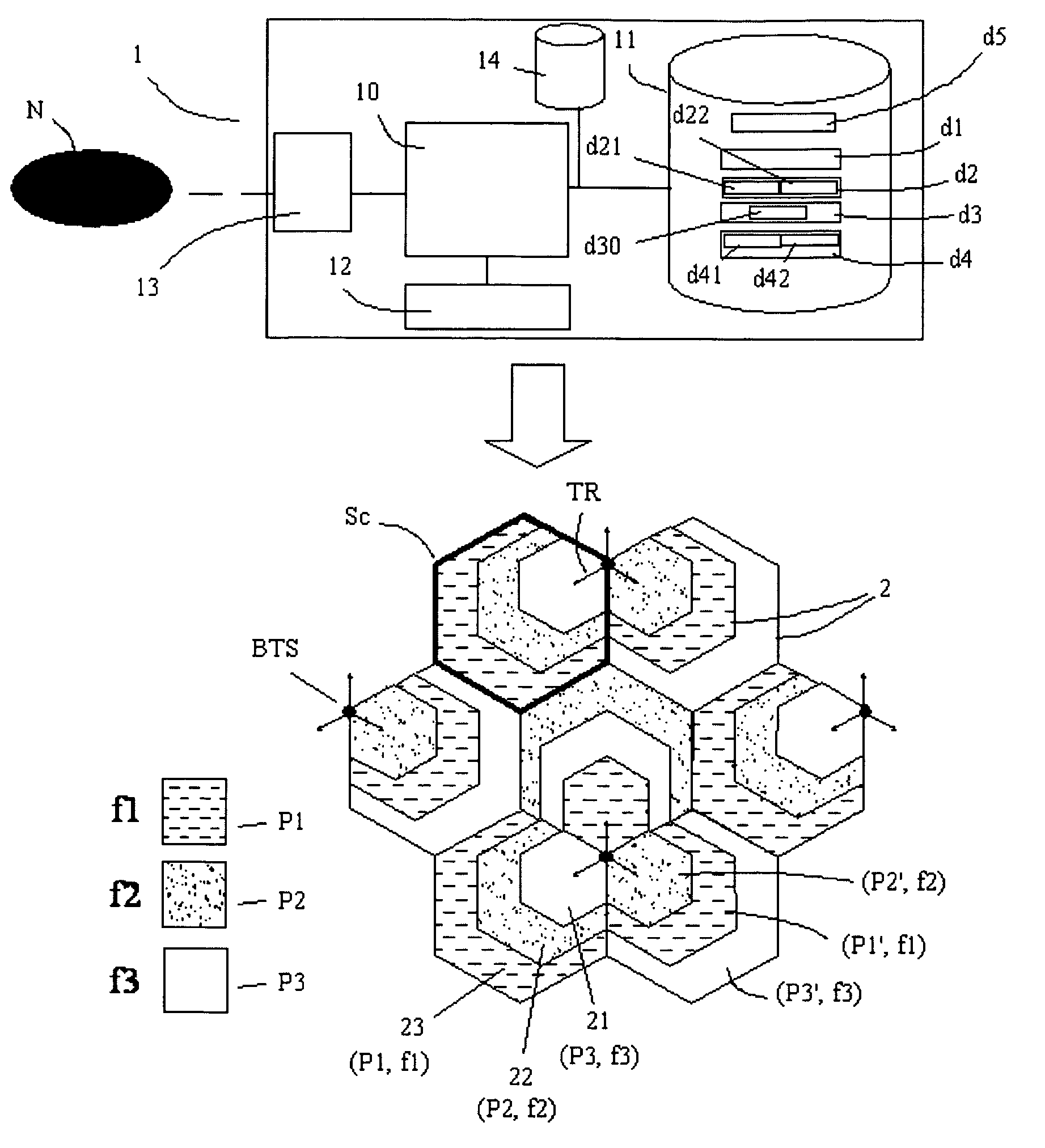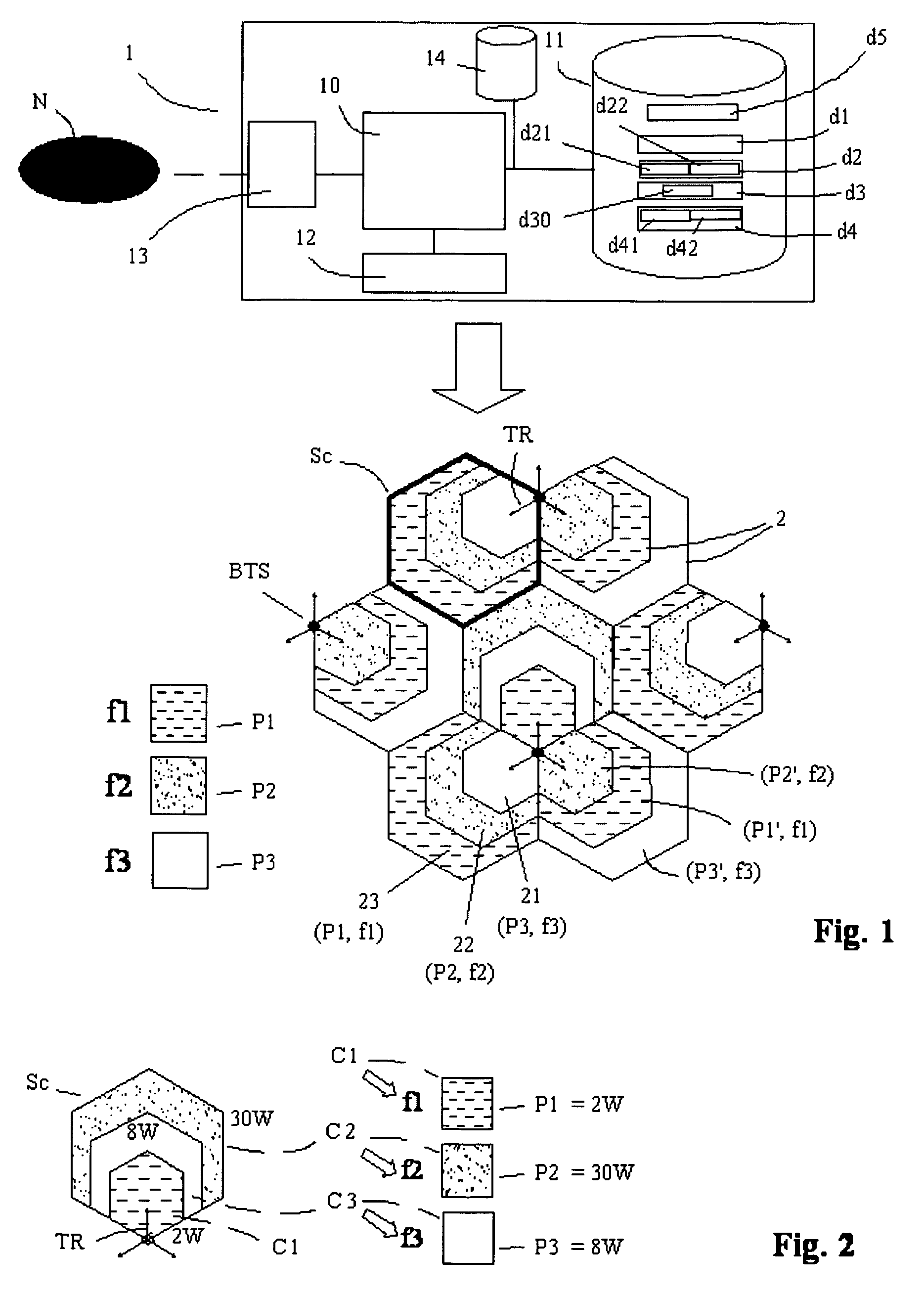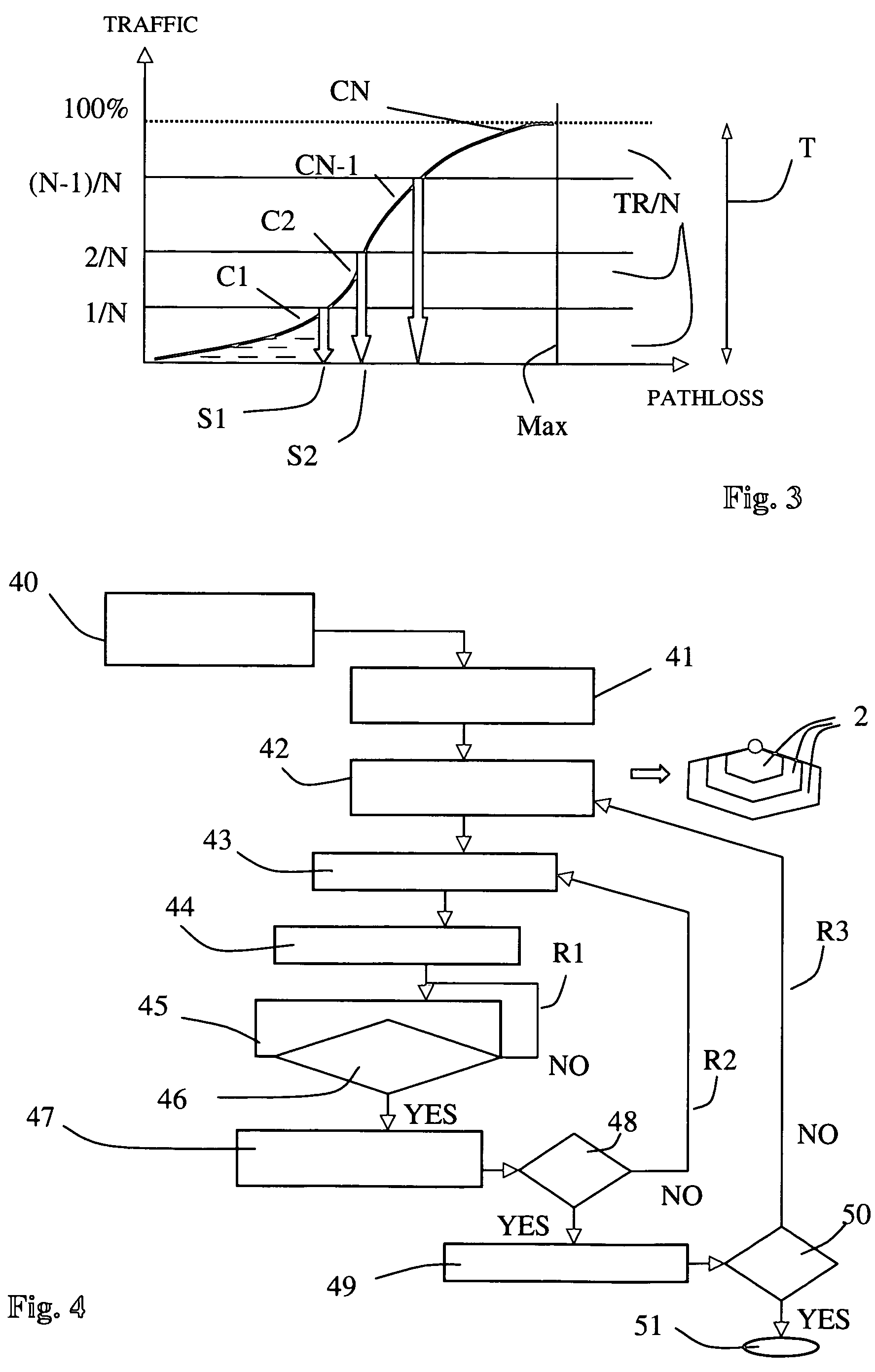Method and system for planning the power of carriers in a cellular telecommunications network
a technology of cellular telecommunications network and power planning system, which is applied in the direction of multiplex communication, electrical apparatus, radio transmission, etc., can solve the problems of no method for optimising network capacity, and areas within the cell do not provide radio access of quality
- Summary
- Abstract
- Description
- Claims
- Application Information
AI Technical Summary
Benefits of technology
Problems solved by technology
Method used
Image
Examples
Embodiment Construction
[0061]With reference to FIG. 1, the power planning tool intended to optimise a cellular telecommunication network N consists of a data processing system 1 provided in particular with a computing module 10, memorising means 11 and selection means 12 to select respective transmission sectors Sc associated with a transmitter TR of a base transceiver station BTS. In one preferred embodiment of the invention, the memorising means 11 allow the storing firstly of data d1 representing geographical areas divided into a plurality of dots of pixels 301, 302, 303 (see FIG. 5) depending upon the division of said network, secondly of data d2 characteristic of sectors Sc and transmitters TR of network N, thirdly of data d3 representing transmit / receive radio attenuation for each sector Sc, and fourthly of data d4 representing traffic volume and distribution within the network N.
[0062]In known manner, when deploying coverage of a wireless communication network N, the cells are deployed so as to ens...
PUM
 Login to View More
Login to View More Abstract
Description
Claims
Application Information
 Login to View More
Login to View More - R&D
- Intellectual Property
- Life Sciences
- Materials
- Tech Scout
- Unparalleled Data Quality
- Higher Quality Content
- 60% Fewer Hallucinations
Browse by: Latest US Patents, China's latest patents, Technical Efficacy Thesaurus, Application Domain, Technology Topic, Popular Technical Reports.
© 2025 PatSnap. All rights reserved.Legal|Privacy policy|Modern Slavery Act Transparency Statement|Sitemap|About US| Contact US: help@patsnap.com



